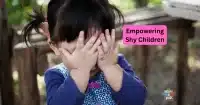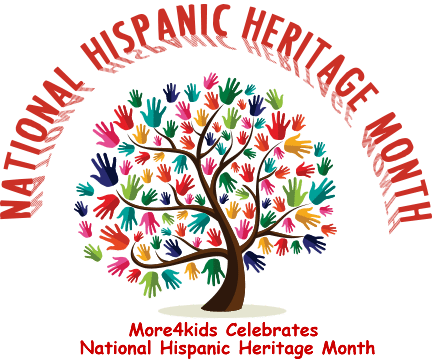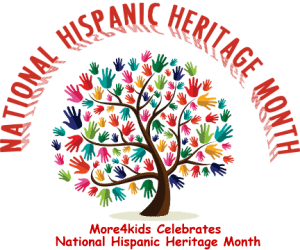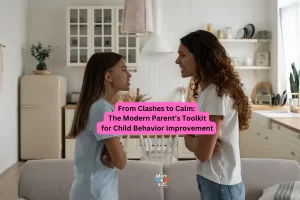Cultural diversity is a very important topic surrounding the National Hispanic Heritage Month 2016. Culture has a direct impact on our identity and heavily influences our behaviors. It is, essentially, what shapes us as individuals and as a whole. Starting on September 15th and continuing on until October 15th, the United States recognizes the presence and contributions made by those that are classified as Hispanic and Latino Americans. The nation celebrates this culture and their rich heritage. It is essential that we, as parents and caregivers, place an emphasis on the various cultures in the United States and how they have shaped and continue to influence us, as a whole. We should ensure that our children embrace these cultures and the wide range of diversity in our nation. One of the most positive and productive ways to accomplish this task is by placing a special emphasis on National Hispanic Heritage Month 2016.
What is Cultural Diversity?
Before expounding on the facts pertaining to National Hispanic Heritage Month, we feel it is first important to outline the definition of cultural diversity. Not only will this help our children to appreciate diversity, but, it will increase our own level of appreciation when it comes to diversity. In essence, cultural diversity is a system of various beliefs and behaviors that not only recognizes the actual presence of different groups in a society, but, also respects those groups. It involves acknowledging and valuing the socio-cultural-based differences and encourages that group to continue to contribute in their own way in order to empower our society, as a whole. Therefore, in National Hispanic Heritage Month, we are teaching our children the importance of valuing the Hispanic people in our country, their contributions to our country, and we encourage them to continue to contribute to our nation so that we may become empowered, as an entire nation.
National Hispanic Heritage Month – The Basics
Throughout history, Hispanics have always held a very strong commitment to their family, their faith, their service to their communities, and hard work. Their historical traditions and the customs of their culture have not only enhanced our nation, but, have aided in shaping our national character. The celebration of this special month initiated back in the year of 1968 on September 15th. This is the day when five different Latin American countries acquired their independence. These include Nicaragua, Costa Rica, Honduras, El Salvador, and Guatemala. Since that time, other countries have established this time period as the one to celebrate their independence. The additional countries include Belize, Mexico, and Chile.
Hispanics and Latinos
It is important to understand that the classifications of “Hispanic” and “Latino” refers to those that originate from South or Central America, Puerto Rico, or another Spanish-based culture or people, without regard to a specific race. The Census forms allow Hispanic and/or Latino people to identify themselves in numerous ways. These include “Mexican”, “Mexican American”, “Spanish”, “Chicano”, “Cuban”, and/or “Puerto Rican”. According to statistics obtained by the Census Bureau, over 50 million people in the United States are Hispanic and/or Latino. This cultural group accounts for 16% of the entire population of the nation. Diversity abounds immensely among the Hispanics and the Latinos. As parents and caregivers, it is our responsibility to share stories about this level of diversity with our children so that they will understand the importance of celebrating National Hispanic Heritage Day.
Why is Cultural Diversity so Important?
According to those that specialize in cultural diversity, culture acts as the “lens” in which each of us evaluate that which surrounds us on a daily basis. What is considered to be “good”, “proper”, and “normal” heavily depends on what our culture has taught us. Our nation, our schools, our workplaces, our parks, our neighborhoods, our churches and other places that we live, work, and play are becoming increasingly abundant in cultural diversity. Everywhere we turn and look, there are multitudes of various cultures, racial groups, and ethnic groups. We all are consistently learning from one another; however, in order to learn all, we must have a basic understanding of each other. This basic understanding will aid in the process of facilitating both collaboration among groups and cooperation.
Learning about the other cultures in the world aids us in understanding the various perspectives that are part of that world. Diversity helps our children learn to completely dispel all of the biases and stereotypes about various groups that are part of our world. Encouraging cultural diversity helps our kids not only recognize but have respect for the way people live when they are different from us. It encourages our children to interact with other people and groups of people in such a way that we are able to build trust, develop respect, and understand all people from all backgrounds. By educating our children on National Hispanic Heritage Month and how the Hispanics and Latinos have positively contributed to our thoughts, our language, and our experiences, we can help them learn how important the people are to our world – as a whole.
Supporting Cultural Diversity during National Hispanic Heritage Month
There are several ways to support cultural diversity with your child during National Hispanic Heritage Month. You may follow the steps outlined below:
- You should encourage your child to increase their understanding of the Hispanic culture by having them interact with people that are part of the culture.
- Your child should understand that our values should never be imposed on others just because they have their own cultural-based values.
- Children should be taught that many people of other cultures lack proficiency in the English Language; however, this does not indicate a low level of intellectual functioning.
- You should teach your child that various concepts and roles within the Hispanic culture may be much different than the concepts and roles within their own culture.
- In school and church, you should encourage the use of materials that represent various cultural groups within society. Not only will this help your child appreciate the different cultures in the world, but, it will open up the eyes of the adults in your community, too!
- If you see that others are displaying behaviors that are considered to be biased, prejudiced, or displays a high level of insensitivity towards a certain culture, you should intervene and also educate your child on the best method of handing the situation.
- You should always make an attempt to be highly proactive in listening to others, accepting their opinions, and welcoming new ideas. By displaying this level of respect in front of your child, your child is sure to display that level of respect, too.
Celebrate Every Single Day
Cultural diversity is supportive of the idea that each and every single person in the world has the unique capability of making a positive and unique contribution to society, as a whole. Differences should be celebrated each and every single day. During National Hispanic Heritage Month, we should recognize and respect all Hispanics and Latino Americans in the world. However, the celebration should not stop after this special month is over. Instead, our families and our children should be encourages to celebrate the differences among people and groups every single day. By doing so, we are all empowered!
















Add Comment